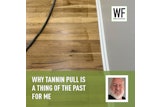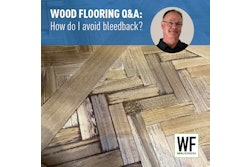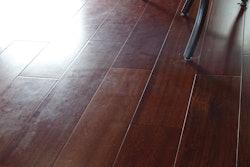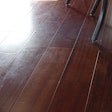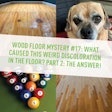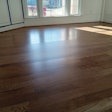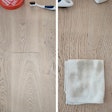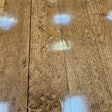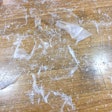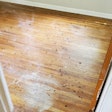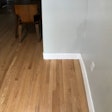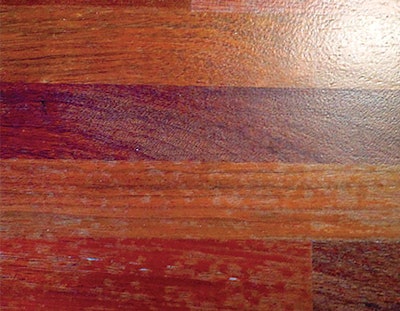
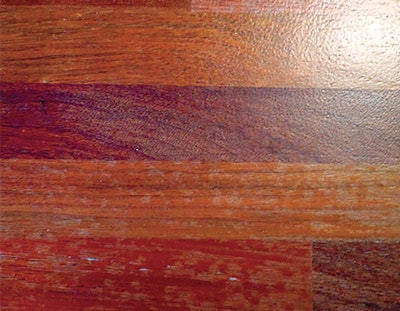
The Problem
After both newly installed and existing Brazilian cherry flooring was resanded and recoated, the areas with existing flooring had blotchy lighter spots on the floor.
What Happened
The condo had approximately 1,100 square feet of existing Brazilian cherry flooring throughout the kitchen, dining room, living room and other main floor areas on a plywood subfloor over a basement. The contractor was asked to add approximately 225 square feet of new Brazilian cherry in the hall and closet, which was installed in May.
After the new flooring was installed, the contractor then sanded and finished the entire floor. After sanding, he used an oil-modified sealer followed by two coats of a matte waterborne urethane. The homeowner didn't like the matte finish, so the contractor then coated with a waterborne satin finish.
Once all coats were dry, the builder covered only the existing flooring with a foam protective covering that was taped around the edges, and all the flooring was covered with upside-down carpeting that had been torn out of other areas. After about two-and-a-half weeks, the covering was removed, and they saw that only the existing areas of Brazilian cherry looked blotchy.

The Inspection
The blotchy appearance in the existing flooring was obvious, with lighter spots in the finish ranging from 1⁄4–6 inches across. In some areas, the discolorations were contained to one board, but in others, they crossed over several adjoining boards. The newly installed flooring showed no issues.
The RH in the home's living area was 51.0% at 77 degrees Fahrenheit, while the basement was at 52.7% RH and 76 degrees. Moisture readings on the existing Brazilian cherry averaged 7.0% MC, while the new Brazilian cherry averaged 7.7% MC. Subfloor moisture was an average of 8.0%; all of the readings were in a typical range.
At first it appeared the spots might be consistent with white spots that can appear in Brazilian cherry, but because the spots went across multiple boards, that was eliminated as a cause. After reviewing all procedures, it was apparent that the only variable was the foam flooring protection. I got information on it from the builder and discovered it had a perm rating of 0.06 and is designed as a fan-fold exterior wall insulation. I determined the blotchy areas were due to the finish solvents being trapped by the covering, not allowing the finish to cure properly.
RELATED: Avoid Common Callbacks with Imported Species
How to Fix the Floor
The floor must be resanded and recoated.
In the Future
Allow the finish to dry naturally between coats, ensuring any protective covering is kept to a minimum and is permeable.










